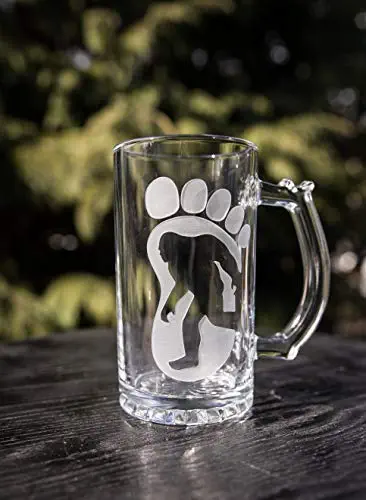The dense, mystical forests of the Pacific Northwest have long been home to one of the most enduring mysteries in the world of cryptozoology: Bigfoot, also known as Sasquatch. This towering, ape-like creature has captured the imaginations of people worldwide, sparking debates between skeptics and believers for generations. In this article, we delve into the beliefs and legends surrounding Bigfoot, examining reported sightings and encounters that have both fascinated and perplexed enthusiasts for decades.
Origins of the legend

The legend of Bigfoot traces its roots back to Native American folklore, where indigenous tribes often shared stories of large, hairy, humanoid creatures that inhabited the remote wilderness. Among these tribes, Bigfoot was perceived as a powerful and elusive guardian spirit of the forest, playing a vital role in maintaining the balance between nature and humanity. Various regional names were used to refer to this cryptic entity, emphasizing the local nature of the belief.
Encounters and sightings
The Patterson-Gimlin Film (1967): One of the most famous Bigfoot encounters occurred on October 20, 1967, when Roger Patterson and Bob Gimlin captured footage of a purported female Bigfoot in Bluff Creek, California. The shaky film, showing the creature walking away from the camera, became a cornerstone of Bigfoot evidence, though it remains a topic of heated debate among skeptics.
Skookum Cast (2000): In the Gifford Pinchot National Forest of Washington state, a peculiar discovery was made in 2000. A team of researchers stumbled upon a large impression in the mud, allegedly left by a reclining Bigfoot. The “Skookum Cast” remains a contentious piece of evidence in the Bigfoot community, with some experts arguing it could be a bear or other animal print.
Ape Canyon Incident (1924): One of the earliest documented Bigfoot encounters took place near Mount St. Helens in 1924. A group of miners claimed that a group of ape-like creatures threw rocks at their cabin, leading to the infamous “Ape Canyon Incident.” While skeptics question the validity of the story, it remains an influential account in the Bigfoot lore.
The Bauman Incident (1924): In the same year as the Ape Canyon Incident, Albert Ostman, a Canadian prospector, claimed to have been abducted by Bigfoot. According to his account, he was camping in the wilderness of British Columbia when he was forcibly taken by a family of Bigfoots. Ostman’s tale has been both questioned and embraced by the Bigfoot community over the years.
The Marble Mountain Encounter (1961): Jerry Crew, a construction worker in California, made headlines when he discovered large, human-like footprints at his construction site in the Six Rivers National Forest. Crew and his crew members named the creature responsible for the tracks “Bigfoot,” thereby popularizing the term. This incident marked a pivotal moment in the widespread fascination with the creature.
The Skamania County Encounter (1969): Skamania County in Washington passed a law in 1969, making it a felony to kill a Bigfoot. The ordinance was a response to numerous sightings and encounters reported in the area, aiming to protect the creature if it were indeed proven to exist. The county later repealed the law in 1984, stating that it had served its purpose.
The Silver Star Mountain Incident (2012): A group of hikers in the Gifford Pinchot National Forest claimed to have encountered a large, ape-like creature on Silver Star Mountain, Washington. They reported hearing strange vocalizations and finding footprints, adding to the lore of Bigfoot sightings in the region.
The Freeman Footage (1994): In Gold Creek, Washington, a local man named Paul Freeman captured a controversial video allegedly showing a Bigfoot walking through the forest. While the footage has been scrutinized and debated by skeptics, it remains one of the numerous pieces of visual evidence contributing to the Bigfoot phenomenon.
The Greenwater Footprints (1982): A series of unexplained, large footprints were discovered near the town of Greenwater, Washington, sparking excitement among Bigfoot enthusiasts and drawing considerable media attention. Despite investigations, the origins of these footprints were never fully determined.
The Cowlitz Valley Sightings (1970s): The Cowlitz Valley in Washington has had numerous reported sightings of Bigfoot throughout the 1970s. Witnesses claimed to have seen large, hairy creatures crossing roads, moving through forests, and observing them from a distance. These sightings added to the lore of Bigfoot’s presence in the state.
The Walla Walla Incident (1997): In the town of Walla Walla, Washington, a family reported seeing a large, ape-like creature roaming their property and peering into their windows late at night. The family claimed to hear eerie vocalizations and discovered footprints near their home, heightening fears of a possible Bigfoot presence in the area.
The White Salmon River Encounter (2005): A group of rafters on the White Salmon River claimed to have spotted a tall, bipedal creature on the riverbank. The witnesses described it as a large, hairy figure that moved swiftly through the dense foliage, leaving a lasting impression on the rafters’ minds.
The Mount Adams Incident (2013): In the vicinity of Mount Adams, Washington, a hiker reported encountering a massive, upright, hair-covered creature. The hiker was taken aback by the size and appearance of the figure, describing it as unlike anything he had seen before.
The Tumwater Canyon Encounter (2018): Near Leavenworth, Washington, a couple camping in Tumwater Canyon claimed to have seen a Bigfoot-like creature observing them from a distance. They reported hearing strange, guttural vocalizations during the encounter, which left them shaken and convinced of the creature’s existence.
The Nisqually Valley Sightings: The Nisqually Valley, located near Mount Rainier in Washington, has witnessed numerous Bigfoot sightings over the years. Locals and visitors alike have reported seeing large, dark figures moving through the forests and disappearing into the wilderness.
Beliefs and theories
Believers argue that Bigfoot is an undiscovered primate species, possibly a relic population of Gigantopithecus, an extinct ape that lived in Asia. They claim that the creature’s elusive nature and remote habitat have allowed it to evade scientific scrutiny. Supporters often point to footprints, hair samples, and audio recordings as evidence of Bigfoot’s existence.
Skeptics, on the other hand, propose various alternative explanations for Bigfoot sightings. Some suggest that misidentifications of known animals, hoaxes, or mass hysteria could be behind many reported encounters. Additionally, the lack of verifiable physical evidence and the absence of a breeding population in the wild make it difficult for the scientific community to accept Bigfoot as a real creature.
Cultural impact
Bigfoot’s legend has transcended regional boundaries and penetrated popular culture. Numerous books, documentaries, and TV shows have been dedicated to exploring the mystery of Bigfoot, captivating audiences worldwide. The creature’s iconic status has made it a symbol of wilderness and mystery, drawing tourists and enthusiasts to the Pacific Northwest in search of their own encounters.
Conclusion
The Pacific Northwest continues to be a hotbed for Bigfoot sightings and encounters, with enthusiasts and researchers tirelessly seeking evidence of the elusive creature’s existence. As these accounts persist, the legend of Bigfoot remains deeply ingrained in the cultural fabric of the region, weaving tales of mystery and wonder through its ancient forests. While the scientific community grapples with the validity of these claims, the allure of the elusive, towering figure known as Bigfoot endures, captivating the hearts and minds of those who dare to believe in the enigmatic creature that roams the wilds of the Pacific Northwest.





